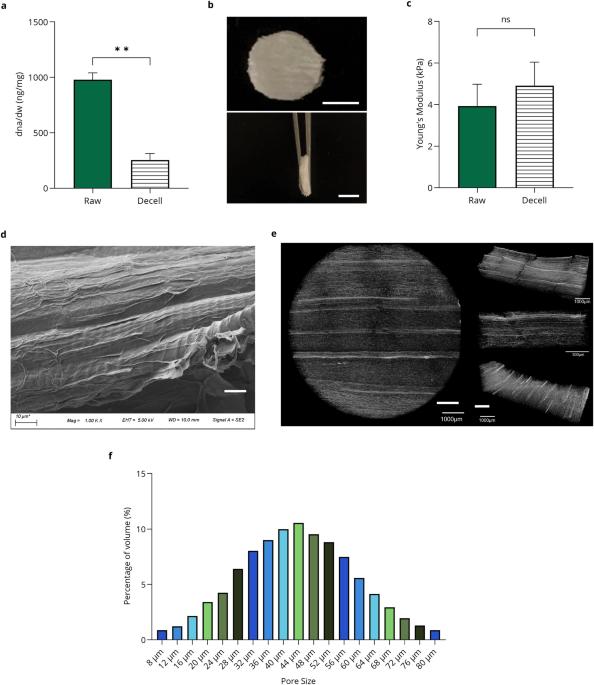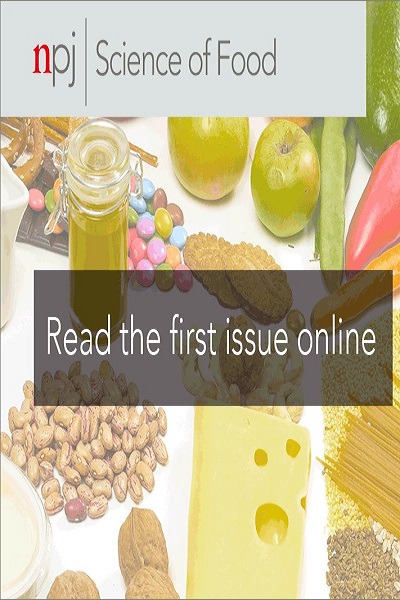脱细胞植物支架促进猪骨骼肌组织工程,用于培养肉类生物制造
IF 6.3
1区 农林科学
Q1 FOOD SCIENCE & TECHNOLOGY
引用次数: 0
摘要
栽培肉(CM)为传统畜牧业提供了一种可持续的、符合道德规范的替代品,它涉及细胞在受控环境中的成熟。为了模仿传统肉类的复杂结构,开发不含动物成分且可食用的支架至关重要,它能在组织发育过程中提供重要的物理和生物支持。脱细胞芦笋支架上排列整齐的血管束有助于小鼠成肌细胞(C2C12)和猪脂肪间充质干细胞(pADMSCs)的附着和排列。肌肉分化通过肌肉标记物(包括肌球蛋白重链(MHC)、肌原蛋白(MYOG)和Desmin)的免疫荧光染色进行评估。与增殖细胞相比,C2C12 分化细胞中肌酸激酶的代谢活性明显增加。定量 PCR 分析显示,与第 0 天相比,肌球蛋白重多肽 1(MYH1)和 MYOG 的表达明显增加。这些结果突显了脱细胞植物支架(DPS)的应用前景,它是一种可食用的材料,有利于细胞附着、增殖和分化成肌肉组织。为了创建具有生物仿真性的 CM 原型,还在同一支架上共同培养了源自 pADMSC 的肌肉和脂肪细胞。肌肉标记物的免疫荧光染色和 LipidTOX 染色证实了这种共培养,分别显示出明显的肌肉纤维和含有脂滴的脂肪细胞。对未煮熟的中药原型和猪里脊肉进行的质构分析表明,两者的质构值无明显差异。不过,与猪里脊肉相比,煎煮过的中药原型在硬度和咀嚼感方面有明显差异。了解支架的纹理特征有助于我们深入了解中药产品的潜在感官属性。DPS 显示了推进中药生物制造的潜力。本文章由计算机程序翻译,如有差异,请以英文原文为准。

Decellularised plant scaffolds facilitate porcine skeletal muscle tissue engineering for cultivated meat biomanufacturing
Cultivated meat (CM) offers a sustainable and ethical alternative to conventional animal agriculture, involving cell maturation in a controlled environment. To emulate the structural complexity of traditional meat, the development of animal-free and edible scaffolds is crucial, providing vital physical and biological support during tissue development. The aligned vascular bundles of the decellularised asparagus scaffold were selected to facilitate the attachment and alignment of murine myoblasts (C2C12) and porcine adipose-derived mesenchymal stem cells (pADMSCs). Muscle differentiation was assessed through immunofluorescence staining with muscle markers, including Myosin heavy chain (MHC), Myogenin (MYOG), and Desmin. The metabolic activity of Creatine Kinase in C2C12 differentiated cells significantly increased compared to proliferated cells. Quantitative PCR analysis revealed a significant increase in Myosin Heavy Polypeptide 1 (MYH1) and MYOG expression compared to Day 0. These results highlight the application of decellularised plant scaffold (DPS) as a promising, edible material conducive to cell attachment, proliferation, and differentiation into muscle tissue. To create a CM prototype with biological mimicry, pADMSC-derived muscle and fat cells were also co-cultured on the same scaffold. The co-culture was confirmed through immunofluorescence staining of muscle markers and LipidTOX staining, revealing distinct muscle fibres and adipocytes containing lipid droplets respectively. Texture profile analysis conducted on uncooked CM prototypes and pork loin showed no significant differences in textural values. However, the pan-fried CM prototype differed significantly in hardness and chewiness compared to pork loin. Understanding the scaffolds’ textural profile enhances our insight into the potential sensory attributes of CM products. DPS shows potential for advancing CM biomanufacturing.
求助全文
通过发布文献求助,成功后即可免费获取论文全文。
去求助
来源期刊

NPJ Science of Food
FOOD SCIENCE & TECHNOLOGY-
CiteScore
7.50
自引率
1.60%
发文量
53
期刊介绍:
npj Science of Food is an online-only and open access journal publishes high-quality, high-impact papers related to food safety, security, integrated production, processing and packaging, the changes and interactions of food components, and the influence on health and wellness properties of food. The journal will support fundamental studies that advance the science of food beyond the classic focus on processing, thereby addressing basic inquiries around food from the public and industry. It will also support research that might result in innovation of technologies and products that are public-friendly while promoting the United Nations sustainable development goals.
 求助内容:
求助内容: 应助结果提醒方式:
应助结果提醒方式:


